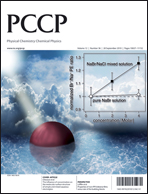Chemical oscillations generated by the Belousov–Zhabotinsky reaction in batch unstirred reactors, show a characteristic chaotic transient in their dynamical regime, which is generally found between two periodic regions. Chemical chaos starts and finishes by following a direct and an inverse Ruelle–Takens–Newhouse scenario, respectively. In previous works we showed, both experimentally and theoretically, that the complex oscillations are generated by the coupling among the nonlinear kinetics and the transport phenomena, the latter due to concentration and density gradients. In particular, convection was found to play a fundamental role. In this paper, we develop a reaction–diffusion–convection model to explore the influence of the reagents consumption (BrO−3 in particular) in the inverse transition from chaos to periodicity. We demonstrated that, on the route towards thermodynamic equilibrium, the reagents concentration directly modulates the strength of the coupling between chemical kinetics and mass transport phenomena. An effective sequential decoupling (reaction–diffusion–convection → reaction–diffusion → reaction) takes place upon the reagents consumption and this is at the basis of the transition from chaos to periodicity.

You have access to this article
 Please wait while we load your content...
Something went wrong. Try again?
Please wait while we load your content...
Something went wrong. Try again?


 Please wait while we load your content...
Please wait while we load your content...